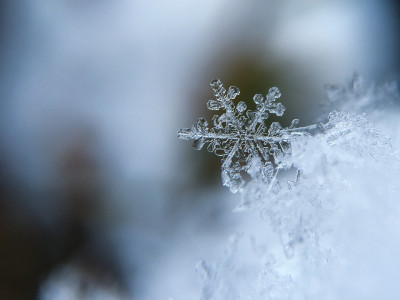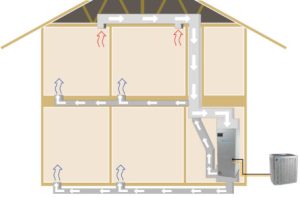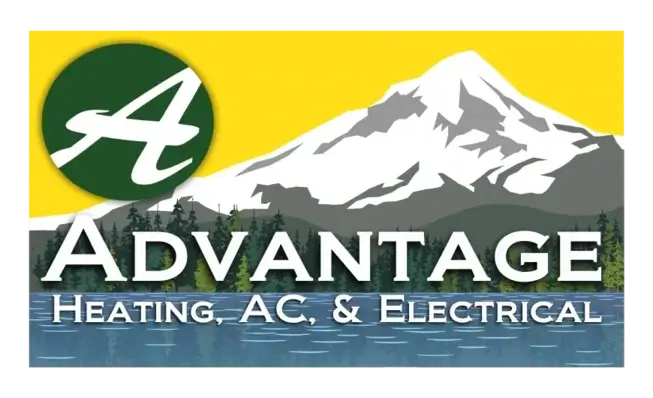Efficient Heating with Heat Pumps in Freezing Temperatures
Will Your Heat Pump Work Below Freezing?
In an earlier post, we mentioned that when it gets too cold, your heat pump will become inefficient at heating your home. Obviously, a heat pump is supposed to keep our homes warm and comfortable, so why does a heat pump not work as well when it’s freezing?
To put it simply, freezing temperatures make it difficult for heat pumps to siphon heat from outside. Once the temperature gets below a properly sized heat pump’s balance point, your heat pump will lose efficiency. In our market of Oregon, we aim to set a heat pump’s balance point between 30 and 35 degrees.
If a heat pump is the correct size for your house, then it may lose efficiency at different temperatures. However, if the heat pump is the correct size for your home, then you should not see a dip in efficiency until the outside temperature reaches the set balance point.
This is not a universal truth, as geothermal heat pumps pull heat from the earth. It also does not mean that your heat pump will not work at all, it just won’t work as well.
In this post, we’ll explain why a heat pump can lose efficiency in freezing temperatures and solutions to keep you warm in the winter.
Why does Cold Weather Reduce Efficiency?
Heat pumps work by absorbing ambient heat and transferring it to a different location. In the summer, the refrigerant in the heat pump will absorb heat in your home and pump it outside. In the winter, the refrigerant cools down so that the air is warmer than the refrigerant. It then absorbs that heat difference and pumps it into your home.
A heat pump does not create its own heat like a furnace does. It relies on the air outside to be warmer than the refrigerant in the outdoor unit. As the temperature gets lower, it becomes harder to make the refrigerant significantly cooler than the ambient air. That means it will take longer to capture and compress enough ambient heat to warm your home.

This happens when the outside temperature gets below the balance point. Your heat pump will still be able to work, even when it gets to 20 degrees or lower, it will just have to work that much harder.
Modern Heat Pumps Perform Better Than Old Ones
Notice that we said that a heat pump could still work. It just won’t work efficiently. That wasn’t always the case.
Older models of heat pumps had a much more severe limitation on how they could operate. This would sometimes lead to those models being unable to work in subfreezing temperatures.
This has led to a misconception that heat pumps won’t work at all once the temperature gets below the balance point. While your heat pump will more than likely need a secondary source of heat to help, it will still work. Even if you live in a colder climate, a heat pump is still a viable primary source of heat as long as it’s not below the balance point year-round.
Modern heat pumps have gone through several advances in technology. This has improved their efficiency and broadened the scope at which they can operate. This means that a modern heat pump can run in freezing temperatures.
Why is Secondary Heat Necessary?
It’s recommended to have a secondary heat source if you live in a region where winter weather gets below freezing. Heat pumps experience a hefty loss of efficiency when it gets below their balance point. This is because they do not create heat, they transfer heat.
When your heat pump loses efficiency, it will struggle to provide heat to your home. This means it will run longer cycles and the equipment could get damaged. It also may not provide an ample amount or even heat.
When to Use Secondary Heat
Thankfully, most modern HVAC systems do not require you to flip on your secondary heat source manually. Modern HVAC systems switch over to Auxiliary Heat when it detects that it is too cold for the heat pump to work efficiently.
If your system does not automatically switch on, your thermostat should have an Auxiliary Heat setting that you can switch on. Do this when it drops below the balance point, but just remember to turn the Auxiliary Heat setting off when it gets warmer.

Keep in mind this is not Emergency Heat. Emergency Heat comes on when something has gone wrong, and your heat pump is no longer functional. Give your local HVAC professionals a call and schedule an inspection of your heat pump.
Common Heat Pump Freezing Weather Problems
You’ll notice your thermostat switch to the Emergency Heat setting if something has gone wrong with the heat pump. It’s perfectly okay to run your system in Emergency Heat, since it’s for a heating emergency.
Just schedule a repair call as soon as possible, because Emergency Heat uses more energy and will be more expensive than any other method of home heating.
It is most common for something to go wrong during cold weather because of a variety of environmental factors. You’ve probably done nothing wrong, but mother nature can be rough on machinery.
Here are some common problems that pumps run into during freezing weather.
1. Falling Debris

This may not be the most obvious problem, but it happens more often than you would think. Winter storms can break off tree limbs or whip around other debris. If that debris lands on or punctures your heat pump, it will break your heat pump.
Keep up on grooming your trees if you have a lot on your property.
2. Ice Damage
The outdoor unit of heat pump systems can withstand snow, ice, and water without rusting or breaking. However, if there is heavy ice buildup on the components, then the weight can dislodge or break something.
Your heat pump should be able to thaw itself with its Defrost Mode. Just check your thermostat if you’re experiencing an ice storm and make sure it has not switched over to Emergency Heat. If it says Auxiliary Heat or Defrost Mode, that means your HVAC system is managing itself how it is supposed to.
3. Frozen Heat Pump
You would think that a frozen heat pump would fall into the same category as ice damage. In most cases, ice build up will not completely freeze over your heat pump because of the Defrost Mode. One of the most common causes of an entirely frozen heat pump is a refrigerant leak.
In the case of a refrigerant leak, an HVAC tech will need to repair the leak before they can do anything else with the heat pump. Schedule a repair quickly if you notice what could be a refrigerant leak. The EPA has a 30-day timeline for administering a repair from the date you or an HVAC professional discovered the leak. If the weather makes that unfeasible, work with your local HVAC pros to create a repair plan to be completed within 120 days.
We have an article on how the EPA requires refrigerant leaks to be handled.
The other most frequent culprit is lack of airflow because of a dirty filter, which you can prevent by replacing the air filter as suggested by the manufacturer’s instructions.
Who Are Advantage Heating and Air Conditioning?
We are your local HVAC Experts out of Salem, Oregon. We hope that this post gave you the information you need to keep your house warm in the winter. If you have other questions about HVAC systems, check out our other blogs. To learn more about who we are and how we can help you, visit our website and follow us on social media – we’re here when you need us!







